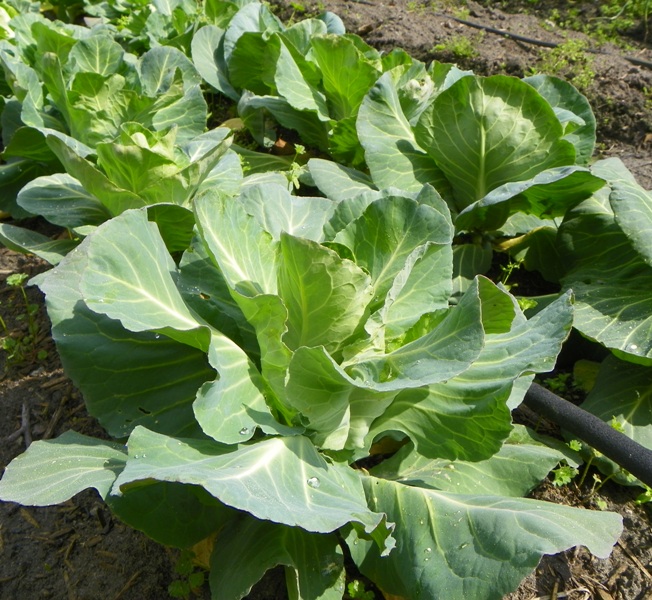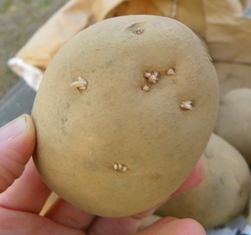What Can I Plant in My Garden for Spring?
go.ncsu.edu/readext?201035
en Español / em Português
El inglés es el idioma de control de esta página. En la medida en que haya algún conflicto entre la traducción al inglés y la traducción, el inglés prevalece.
Al hacer clic en el enlace de traducción se activa un servicio de traducción gratuito para convertir la página al español. Al igual que con cualquier traducción por Internet, la conversión no es sensible al contexto y puede que no traduzca el texto en su significado original. NC State Extension no garantiza la exactitud del texto traducido. Por favor, tenga en cuenta que algunas aplicaciones y/o servicios pueden no funcionar como se espera cuando se traducen.
Português
Inglês é o idioma de controle desta página. Na medida que haja algum conflito entre o texto original em Inglês e a tradução, o Inglês prevalece.
Ao clicar no link de tradução, um serviço gratuito de tradução será ativado para converter a página para o Português. Como em qualquer tradução pela internet, a conversão não é sensivel ao contexto e pode não ocorrer a tradução para o significado orginal. O serviço de Extensão da Carolina do Norte (NC State Extension) não garante a exatidão do texto traduzido. Por favor, observe que algumas funções ou serviços podem não funcionar como esperado após a tradução.
English
English is the controlling language of this page. To the extent there is any conflict between the English text and the translation, English controls.
Clicking on the translation link activates a free translation service to convert the page to Spanish. As with any Internet translation, the conversion is not context-sensitive and may not translate the text to its original meaning. NC State Extension does not guarantee the accuracy of the translated text. Please note that some applications and/or services may not function as expected when translated.
Collapse ▲This is the time to get serious about planting a spring vegetable garden. Vegetables that produce during the spring months are known as cool season crops, meaning they can tolerate some frost but do not like hot weather and should be planted outside now to harvest before the heat of summer. Vegetables that can be planted in February include broccoli, garden peas, carrots, cabbage, and potatoes.
TIPS FOR A GREAT SPRING GARDEN
All vegetables need sun and good drainage. Be sure to develop you garden in a spot that gets sun at least three fourths of the day. If your soil is soggy or has lots of clay, make raised beds out of lumber or concrete blocks to provide better drainage. Make the beds at least eight inches high and fill with a mixture of compost and soil.
In sandy soils, mix a 3”-4” layer of compost into the soil as deep as possible to improve water and nutrient retention. Additional fertilizer will also be needed. Slow release fertilizers are best in sandy soils because they release nutrients over an extended time. Slow release fertilizers include time release synthetic fertilizers such as Osmocote and organic fertilizers like Plant Tone.
WHAT TO PLANT
Some vegetables are typically planted in the garden as seed, while others do better when set out as young plants. Cool season vegetables that do best when seeded directly into the garden include roots crops like radish, beets, turnips, kohlrabi and carrots. Sow these crops from mid February through mid March in deep, loose soils. Root crops grow poorly in hard, compacted soil. When choosing carrot varieties, keep in mind that shorter carrots are easier and quicker to grow than long varieties. Radish mature so quickly new sowings can be made every two weeks to provide a continuous supply.
Other cool season crops that should be seeded directly into the garden include garden peas and their relatives, snow peas and sugar snap peas. These legumes love cool weather and can be sown outdoors as early as mid January. Be sure to plant by early March at the latest. All pea plants produce vines that grow three to six feet tall and need a trellis for support. Twiggy branches cut from deciduous trees and stuck into the rows work well, though pea fencing is also available from some garden centers.
One of my favorite crops to grow in the spring garden is potatoes. Seed potatoes can be purchased from garden centers this time of year. Seed potatoes are small potatoes that have been grown under special conditions to ensure they are free of diseases. They usually give better results than potatoes purchased from the grocery store. Potato varieties that do well in our area include ‘Yukon Gold’, ‘Kennebec’, and ‘Red Pontiac’. Cut seed potatoes into pieces that are each about the size of an egg and contain at least one eye. Seed pieces can be planted immediately or sprouted indoors for a few weeks by placing them in a warm, sunny location. Plant seed pieces six inches deep and ten inches apart in the row with three feet between rows. Keep in mind twelve pounds of seed potatoes can plant around one hundred feet of row and yield over two hundred pounds of spuds.
More vegetables to plant in February and early March include lettuce, spinach, mustard, and turnip greens, which be seeded in rows or in a patch 2’ to 3’ wide. Lettuce and spinach can be sown in the garden from seed or grown from transplants, though turnip greens and mustard are best grown from seed. Onions can be planted now as plants or from ‘sets’, which are basically small onions. Green onions or scallions can also be set out or seeded in early spring, though leeks, shallots, and garlic should have been planted last fall and rarely do well when planted in spring.
Spring vegetables that are best planted out as young plants include broccoli, cabbage, collards, and kale. These can be set out from late February through mid March.
LEARN MORE
Learn more from these online resources:
- Planning for Year Round Harvest (Pender Gardener Article): //pender.ces.ncsu.edu/2013/01/planning-for-year-round-harvest/
- Vegetable Fact Sheets from Clemson Extension: http://www.clemson.edu/extension/hgic/plants/vegetables/crops/
Visit your local Cooperative Extension office to learn more about gardening and landscape care. Go to https://www.ces.ncsu.edu/local-county-center/ to find your county Extension center.
- If you live in Pender County, call 910-259-1235
- In New Hanover County, call 910-798-7660
- In Brunswick County, call 910-253-2610
- In Onslow County, call 910-455-5873
- In Duplin County, call 910-296-2143





